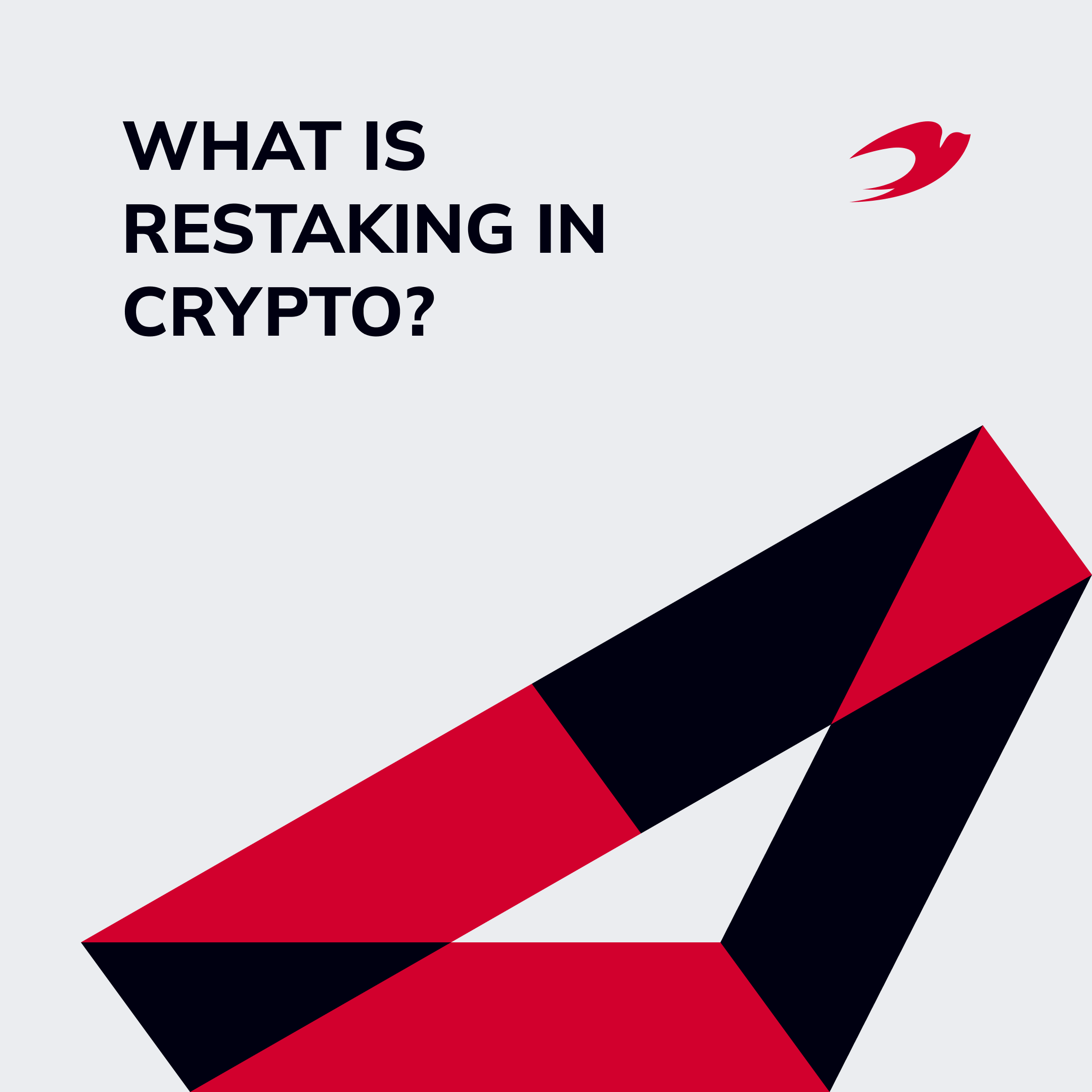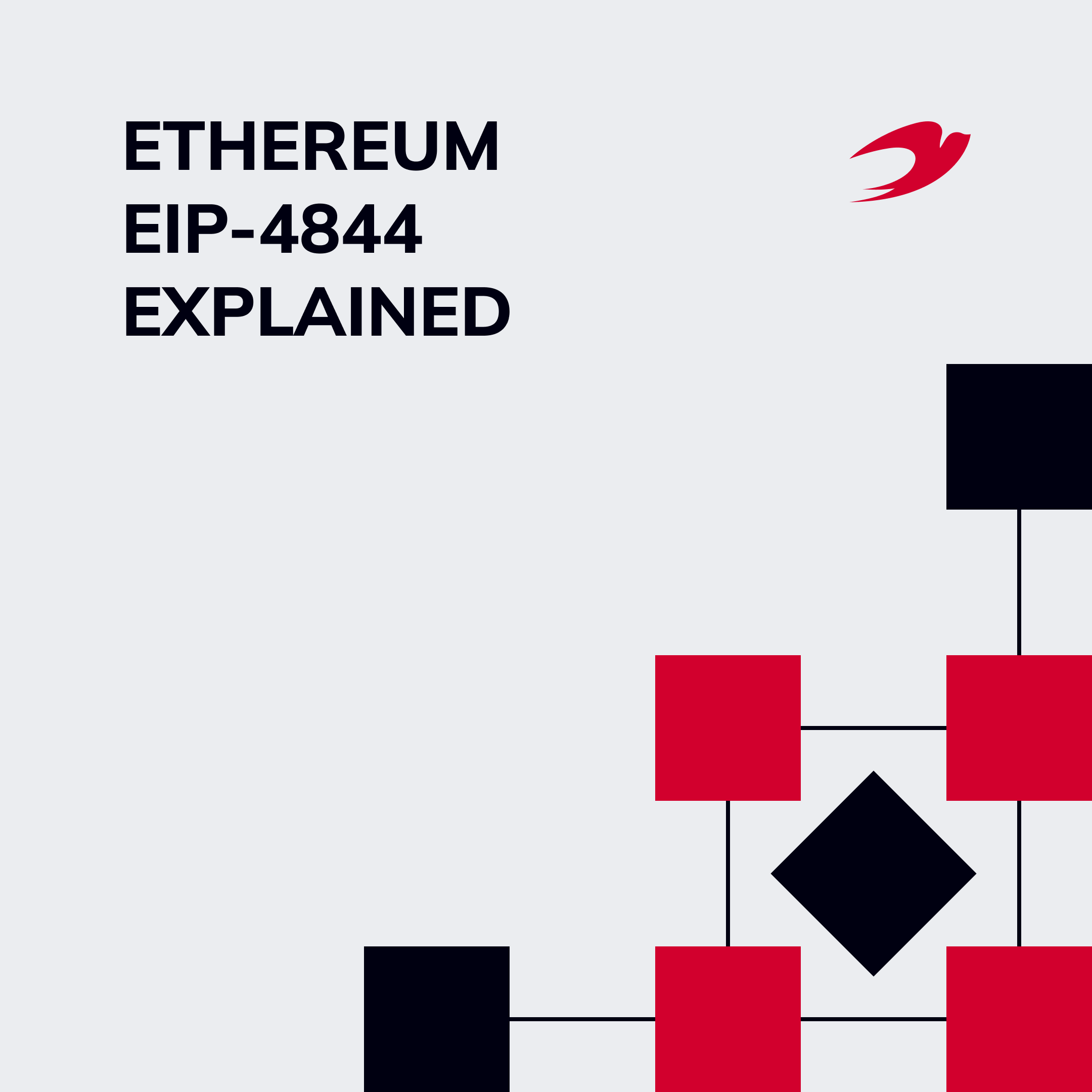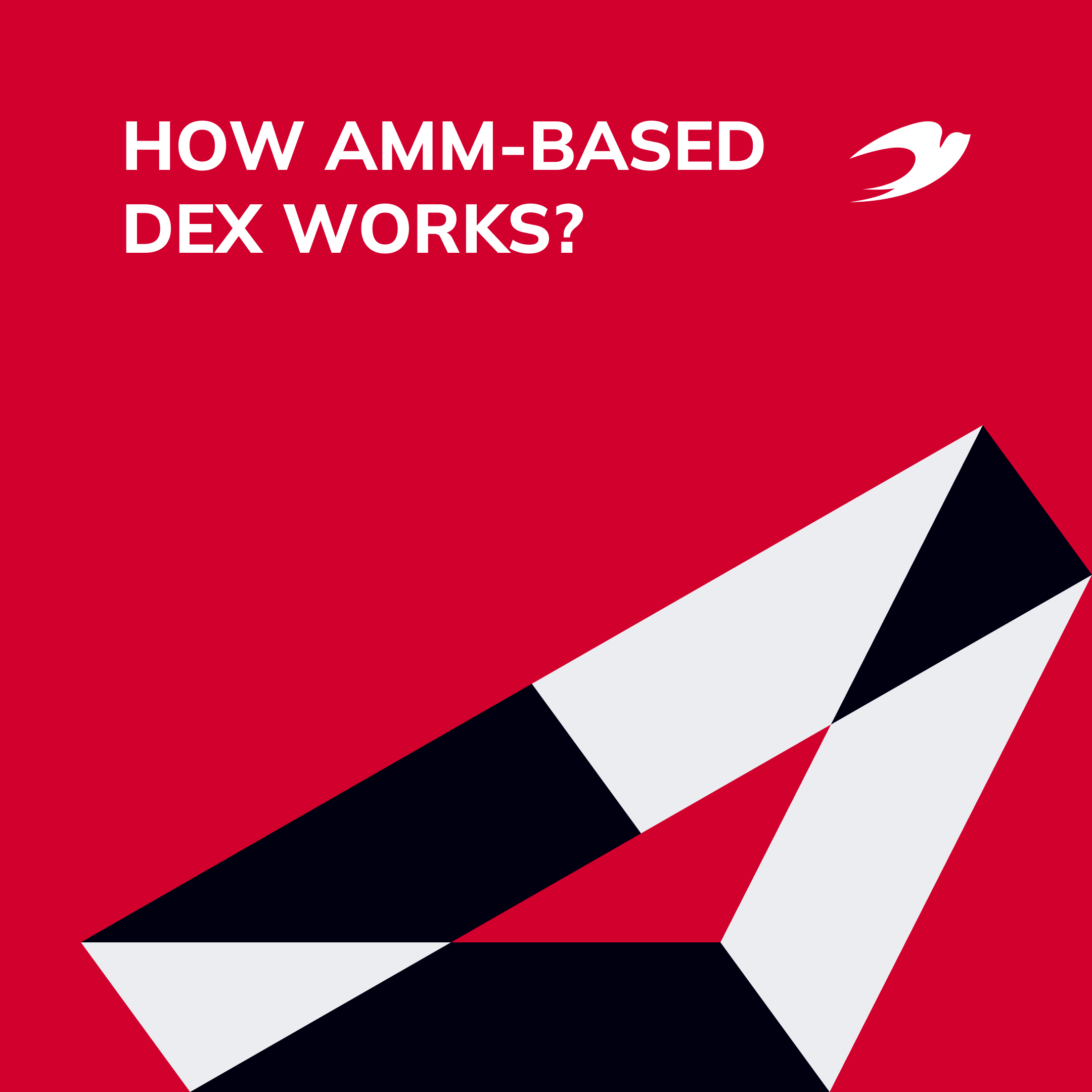In April 2023, Ethereum developers activated the Shapella update, which included several changes for the consensus and execution layers. The most important one was the ability to withdraw ETH from the Beacon Chain deposit contract.
This hard fork created the necessary conditions for the emergence of new directions and the realization of projects, the launch of which was previously impossible due to the restrictions in the network. Staking technology development was one of these directions.
In this article, we will explain restaking opportunities and discuss types of restaking, the potential impact of restaking on the Ethereum market along with how restaking works.
Want to know more about the emerging concept of restaking in DeFi protocols?
Let us help you figure it out! Essentially, restaking protocols provide a set of smart contracts that allow tokens to be redirected and staked again to secure applications outside of the underlying blockchain. Eager to know more tech details? Then read our carefully prepared article or schedule a meeting with our tech team to understand if restaking feature is needed for your product!
Table of Contents:
- Understanding Restaking Concept
- What Problems Is Restaking Trying to Solve?
- Mechanics of Restaking
- Benefits of Restaking
- The Most Popular Restaking Protocols
- Case Study: Dollet Wallet and Released Restaking Feature
- Summary
Understanding Restaking Concept
Before we dive into restaking in crypto, let’s remind you what staking is.
Staking supports the operation of a blockchain by locking cryptocurrency. Users get remuneration for staking their crypto. Staking is possible for cryptocurrencies functioning on a Proof-of-Stake (PoS) protocol.
On the other hand, restaking in crypto allows users to allocate their assets multiple times on the main blockchain as well as on additional protocols. For example, EigenLayer allows Ethereum stakers to use their staked $ETH to secure other networks/protocols as well.
Also, users can choose which additional networks/protocols they want to validate with their current staked $ETH and earn additional revenue from it. In return, they agree to grant EigenLayer additional rights to reduce their $ETH stakes (on top of the rights to reduce the underlying Ethereum staking contract).
The concept of crypto restaking has much in common with merge mining. It involves simultaneously mining two or more cryptocurrencies without reducing the overall mining performance. The model essentially allows the same proof-of-work to be accepted as security guarantees by multiple networks with compatible PoW-based consensus algorithms. When applied to PoS-based blockchains, the concept involves re-purposing capital that is already in staking for similar purposes.
The 2024 restaking market is rapidly transforming from a nascent trend to an innovative reality. As of mid-March, the restaking market cap has reached almost $40 billion. Ethereum restaking dominates the market.
Except for EigenLayer, other projects are also working on restaking or related projects in multiple chains. Some of them are already in operation, and others are coming soon. These include projects like Picasso (Solana restaking) and Babylon (Bitcoin restaking), among others.
Basically, restaking allows ETH validators to use their stakes to validate other networks, for example, via the EigenLayer. This increases the rewards for the validators but also increases the risks.
How Does Restaking Differ From Regular Staking?
Restaking differs from regular staking by involving the process of staking an asset again after the initial staking period, offering the opportunity for recurring engagement and potentially increasing rewards through participation in multiple staking programs or platforms.
Unlike regular staking, restaking enhances the utility of the staked asset by expanding its functionality across various networks, albeit with increased risks associated with managing multiple staking arrangements.
Rostyslav Bortman, Head of Blockchain Department
What Problems Is Restaking Trying to Solve?
Restaking in crypto aims to solve the problem of blockchain security. Restaking enables staked ETH to be used as cryptoeconomic security for protocols other than Ethereum in exchange for protocol fees and rewards.
For example, creating a new PoS network, such as Ethereum or BNB Chain, requires significant capital expenditure. Let’s say a project issues a token to fulfill this security function. They would then have to convince ecosystem participants to assume the price risk of hosting this new token, as well as the opportunity cost over a simple $ETH stake.
EigenLayer is an awesome example for discussion. It introduces 2 new ideas: unified security through restaking and free market management.
Unified security through restaking
EigenLayer provides unified security by allowing new modules to be protected by restaking $ETH rather than their own tokens:
- In particular, after restakers lock their LSTs or their own $ETH with validators, validators can then agree to protect any module they choose.
- Validators set their withdrawal credentials in the EigenLayer smart contract so they can be automatically removed if they misbehave.
- In turn, modules pay a commission for security and validation services that are received by validators and restakers.
The result is the combination of Ethereum’s powerful crypto-economic security with other protocols built on top of it.
Free market governance
EigenLayer provides an open market mechanism that allows validators to determine their own risk-to-reward ratio and choose which restaking module to secure. EigenLayer sees this as a service provided by venture capital firms. Their support is essential for innovation, but the returns are at risk (in the case of restaking, the risk of shrinkage). This way, EigenLayer changes the current market principles and moves Web3 forward.
Mechanics of Restaking
Restaking process involves staking an asset anew after its initial staking period. This procedure enables the staked asset to participate in another staking program or platform, enhancing its functionality and providing the holder with an extra array of rewards, albeit with heightened slashing risks.
Let’s look at an example from the Ethereum ecosystem.
Ethereum’s network is renowned for its robust PoS consensus mechanism, bolstered by numerous validators and extensive distribution. Nonetheless, staked ETH remains inactive on Ethereum, prompting the emergence of liquid staking derivatives. Liquid staking converts staked ETH into tradable tokens, which are usable within decentralized finance (DeFi) applications.
By eliminating the 32 ETH minimum staking requirement, liquid staking enables small-scale holders to pool their assets with others, potentially allowing them to reap staking rewards.
Restaking extends this concept further. These protocols permit other decentralized platforms to utilize assets staked on Ethereum for their own security. Both validator and nominator stakers can earn multiple rewards: initially from the Ethereum network and additionally from the protocol they are restaked into.
So, thanks to restaking, economic security is flipping 10x:
Restaking opens doors for networks beyond Ethereum to access ETH validators to validate their own networks, utilizing the same stakes. Given that ETH validators are currently among the most trusted and reliable validators in the market, this collaboration enhances the credibility and security of participating networks. This sets them apart as more dependable options compared to others.
Talk to an expert!
Schedule a call with one of IdeaSoft tech specialists, and we correctly draw up the requirements for your project
Benefits of Restaking
Here 3 main benefits of restaking that it brings to Web3:
- Enhanced rewards. By staking assets on two networks, stakers have the potential to amplify their earnings significantly.
- Augmented security. As the volume of assets staked increases, so does the value of the network, bolstering its resistance against potential attacks. This heightened security transforms it into a steadfast nucleus for dApps, protocols, and platforms.
- Mitigated dumping. Restaking renders the original token more adaptable, dissuading immediate selling. This expanded utility minimizes the risk of value depreciation for the project and its investors, nurturing a more resilient and enduring ecosystem.
The impact of restaking on the future of Web3 will be huge.
The Most Popular Restaking Protocols
Here are 3 top restaking protocols you should be aware of.
Ether.fi
Ether.fi is the largest liquid restaking protocol (as of mid-March 2024) with a TVL of over $2.2 billion. Ether.fi’s LRT is called eETH restaking tokens:
- Once a user deposits their ETH and receives an eETH restaking token, they can use it in DeFi to maximize their profits.
- The deposited $ETH will receive rewards for both Ethereum PoS staking and EigenLayer restaking (once EigenLayer rewards become available).
- Users can also earn Ether.fi loyalty points intended to play a role in decentralized governance.
Ether.fi also has a related NFT project called Ether.fan, where users can stake their $ETH and mint NFT to earn more points. The NFT represents the stake amount in $ETH, automatically accrues a reward for the stake, and increases the reward depending on how long the user stakes.
Puffer Finance
Puffer Finance is the second largest liquid asset restaking protocol, providing users with their own LRT, pufETH. Although Puffer Finance was only launched in early February 2024, its performance is quite strong, with TVL already exceeding $1.4 billion.
At this stage, it only accepts $stETH (LIDO Deposits ($ETH LST)). Once the main Puffer restaking network is up and running, the plan is to run a stETH Lido to $ETH exchange and re-fix it on EigenLayer.
Puffer Finance has also committed to self-limiting protocol growth to 22% of all Ethereum validators as a way to protect Ethereum decentralization.
Kelp DAO
Its TVL is over $730 million (as of mid-March 2024). It allows for restaking with rsETH. Kelp DAO currently supports its own $ETH, $stETH Lido, $ETHx Stader, and $sfrxETH Frax:
- Users can accumulate Kelp Miles and EigenLayer points as a reward for restaking when making a deposit to Kelp.
- Kelp Miles = (Amount $rsETH) * number of days * 10,000
- Kelp has a referral program.
Kelp currently has integration withPendle, Uniswap, Curve, and Balancer. Kelp contributors can use their $rsETH to interact with these protocols and earn additional profits and extra Kelp Miles/EigenLayer points.
Case Study: Dollet Wallet and Released Restaking Feature
Dollet is a non-custodial mobile crypto wallet. It incorporates advanced features like pool deposits, yield farming strategies, and integration with multiple blockchain networks, including Ethereum, Arbitrum, Optimism, BNB Chain, Polygon, Solana, Tron, BTC.
What our IdeaSoft team has implemented:
- Essential wallet functionalities: sending, receiving, bridging, swapping, buying crypto, and receiving notifications
- Admin panel functionalities: log in/log out, user registration, asset management, pool deposits, farming strategy management, adjustable settings, and network switching;
- Stargate API that enables bridge functionality
- Pool investment smart contract that was developed using Solidity within the Arbitrum network
- Keychain solution integration
- KYC functionality supported by Wert technology
Apart from these common features, we have released restaking functionality inside Dollet wallet. This way, we provided users with more diversified investment options and enhanced returns. USDC Wombat and ETH Restaking strategies are designed to optimize yield generation by employing sophisticated mechanisms. They cater to both conservative investors preferring stablecoins and those looking for growth through Ethereum-based assets.
Summary
In the future, the proliferation of protocols like EigenLayer will change the economic balance of Ethereum and simplify the process of building infrastructure. As a consequence, it will have a positive impact on the development of the ecosystem.
Restaking is being actively discussed in the community, and the discussion is quite constructive. This is a positive signal because when the concept is implemented on a large scale, developers can solve existing problems and reduce intra-network risks.
Restaking technology solves problems relevant to many services and allows validators to manage capital more efficiently. Therefore, we can expect active segment development.




